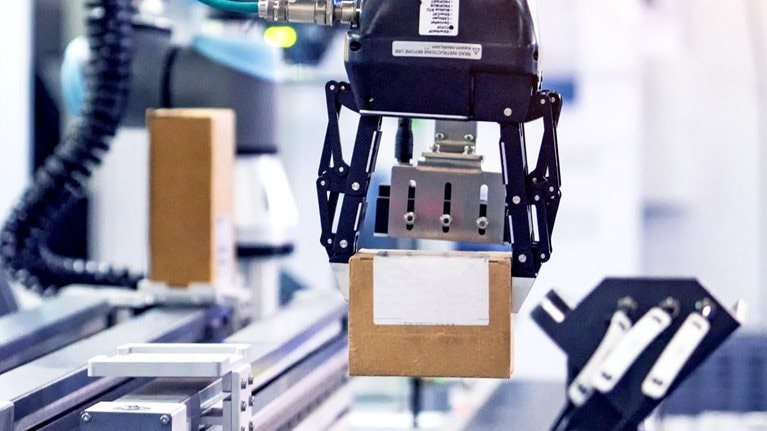Supply chain robots are flying off the shelves as warehouse automation gets its due after years on the outskirts of the Fourth Industrial Revolution. The overall automation market is growing rapidly: at least some expert sources expect robot shipments to increase by up to 50 percent each year through 2030, with warehouse automation growing by more than 10 percent per year.
That is not surprising, since recent disruptions and operational challenges have demonstrated the critical importance of robust supply chains. In the quest for greater resilience, companies are now looking for ways to boost the speed, reliability, flexibility, and productivity of their warehouse and distribution operations. Automation has emerged as the answer. It promises to help organizations tackle pressing supply chain problems: addressing labor challenges, improving fulfillment quality and safety, maximizing space utilization, and increasing throughput.
Supply chain leaders can now choose from a wide range of mature, capable, reliable solutions to match their needs, including high-density storage and retrieval systems, goods-to-person robots, and collaborative robots (or “cobots”)—some humanoid—that can work safely alongside their human colleagues. Automation providers have therefore refined and segmented their technologies to meet different demand scenarios. In the material-movement category, for example, autonomous mobile robot (AMR) systems are primarily used for piece-pick or, more recently, full-pallet operations. Shuttle systems are designed to allow higher density and productivity in case and unit picking. Emerging autonomous solutions (such as cobots mounted on AMRs) could help repurpose legacy infrastructure with enhanced technology.
Advances in computer vision, machine learning, and AI are increasing warehouse robots’ capabilities, too, with the latest models able to plan their own best routes and picking sequences while navigating autonomously in complex environments. And the robotics market is becoming more dynamic, with established warehouse automation players competing alongside a growing number of startups offering specialized solutions or highly flexible general-purpose robotic systems (Exhibit 1).

Companies plan to increase their investment in automation significantly over the next five years, reaching 25 percent of capital spending on average. In logistics and fulfillment, automation is expected to account for more than a third of capital spending, the largest fraction of any sector (Exhibit 2).

Are they getting their money’s worth? Too often, no. A significant portion of automation projects fail, largely for three reasons: lack of cohesive vision, a poor understanding of automation technology by leadership, and misalignment of beliefs and principles within the organization. One consumer goods company invested more than $150 million to consolidate multiple existing warehouses into a single fully automated facility, designed to serve both brick-and-mortar stores and online orders. Despite the substantial investment and year-long planning, the company found that its forecasts for inventory turns and the balance between online deliveries and shipments to stores were inaccurate. The new facility ended up primarily being used for wholesale fulfillment, leaving its advanced automation features for case and part picking underutilized.
Creating a robust, comprehensive warehouse automation strategy is challenging. At a high level, the available options range from point solutions, implemented to address specific issues within existing facilities, all the way to complete networks of new, fully automated facilities built on greenfield sites. But even within each of those categories, there is a wide choice of technologies and vendors. The potential benefits increase as these strategies get bigger and bolder, but so do costs, implementation timelines, payback periods, and execution risks.
Would you like to learn more about our Operations Practice?
Avoid the traps
For any warehouse automation initiative—and especially for large, complex projects—the decisions companies make during the initial strategy development, scoping, and planning phases are critical to the eventual outcome. As part of a comprehensive plan for navigating a multi-year automation journey, seven best practices can help a business avoid common pitfalls:
- Clarify the business needs. Everyone needs to know exactly which problems (such as operating cost, service level, storage capacity, productivity) they want to solve with automation, and fully understand the tradeoffs.
- Establish guiding principles for choosing the right technology. Increased complexity makes selection difficult. To make valid comparisons between options, companies need to understand the nuances of technologies within a category, evaluate the vendors in a crowded supplier space, and understand the full range of potential sourcing and partnership options.
- Evaluate diverse scenarios, but allow for future growth. To ensure that the business case holds up even if underlying assumptions and parameters change significantly over time, automation investments can be phased, with clear triggers established upfront to keep investments in step with business needs. A more capable, costly system with a longer payback period might be the right choice if it gives the option of meeting additional future needs. For instance, a larger initial investment might allow the number of bots in an AMR deployment to be easily increased or transferred between sites, or for additional space next to an automated storage and retrieval system (ASRS) that would support the installation of extra modules as needed.
- Think of network solutions, not automation islands. Maximum cost and operational impact comes from an end-to-end perspective that seeks to improve efficiency across the entire network, with a comprehensive implementation roadmap spanning all sites. Substantial savings and performance improvement can come from replacing single-site solutions with network-wide vendor agreements, which can yield better rates and terms.
- Create an efficient capital deployment strategy to maximize ROI. A playbook of best practices can help companies extract more value, including a centralized control tower to keep stakeholders aligned; optimized scoping, procurement, and contracting; and proactive risk management.
- Develop and pilot a robust implementation plan. Projects need sufficient time to procure and integrate equipment. Testing must be rigorous and comprehensive, covering all SKU types and throughput requirements under a pilot-then-scale approach. A more effective implementation plan then starts with a network rollout sequence that balances the ROI of each step with business continuity risks. Finally, a contingency plan minimizes operational disruptions, while a continuous-improvement mindset incorporates lessons learned throughout the implementation.
- Look beyond the technology. Automation needs highly skilled teams to deploy, run, and maintain advanced systems. For employees who do repetitive tasks, automation helps to redesign positions and provide faster ramp-up opportunities. For highly skilled employees, automation knowledge can enable further career growth opportunities. Filling skill gaps will require a systematic, flexible approach to the recruitment, training, and retention of employees, including from external sources. Companies can also address essential enablers of automation up front, including not only reliable data and robust IT infrastructure but also clear (and encouraging) communications as automation changes the day-to-day work of supply chain teams.

Navigating the new normal: Operations insights for 2024
Take the lead
If your organization is looking to invest in warehouse automation, three sets of immediate actions will put you on the right track.
- Formulate your vision and think big. Articulate your strategy for supply chain automation and lay out a clear roadmap to achieve it. Make sure that the overall plan is based upon robust, granular forecasts that consider growth aspirations for total storage and throughput needs, as well as operational KPIs such as order profile, mix variability, handling units, and picking types. Use that information to select technologies for the expected operating conditions. But don’t limit your possibilities to your current warehouse footprint: a greenfield approach could allow the business to be reconfigured more efficiently.
- Educate your board and leadership on the art of the possible. Leading players are developing new business and operating models to support their supply chain automation ambitions. These can include partnerships with emerging vendors to create tailored solutions, or integrating use cases with other vendors and shippers to generate synergies through collaboration. For example, some leading e-commerce retailers have acquired AMR providers or established strategic partnerships to jointly build fully automated warehouses. Other players have implemented innovative fee structures to increase adoption, such as pay-per-pick models in which the automation provider retains ownership of their equipment, reducing project capital costs by 60 to 80 percent. As a third possibility, some companies are optimizing their end-to-end supply chains with fully automated warehouses and autonomous transportation systems to minimize touches between manufacturing sites and customer delivery points.
- Secure business-wide alignment on a set of core beliefs and design principles. Establish a cross-functional transformation office to set the ground rules for the project, including key stakeholders from functions such as finance, operations, IT, and HR. This team governs the critical design principles that will guide the project and designate the leaders who will be responsible for implementation. Finally, set budget, timeline, and KPI targets to ensure efficient use of resources.
Automation could solve pressing challenges in warehousing and fulfillment while also helping companies meet long-term growth goals. But to maximize ROI, leaders must select solutions that can adapt to their company’s unique business needs. Those who successfully navigate this complex path are building a major advantage over competitors who fall behind.

